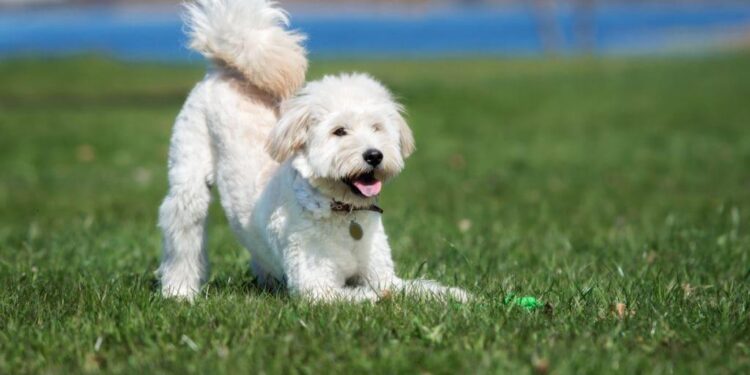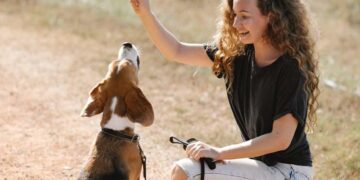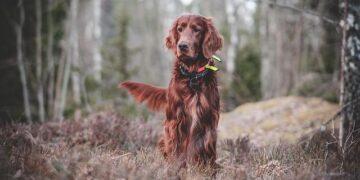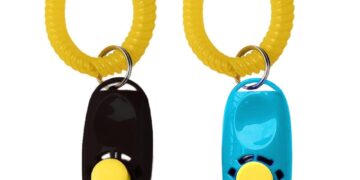Table of Contents
I’ll never forget the look in her eyes.
It was a mixture of hope and fear.
She was a single woman, living alone in a neighborhood that was starting to feel less safe, and she had just asked me the question that would come to define my career: “Can you teach my dog, Max, to attack?”
In my early days as a trainer, full of more confidence than wisdom, I saw only her fear.
I wanted to help.
I wanted to give her a “guardian.” So, I said yes.
I dove into the popular methods—the ones you see in sensationalist videos and on outdated TV shows.
I used aggressive posturing, conflict-based exercises, and tools designed to provoke a reaction.
And it “worked.” Max, a sweet-natured Shepherd mix, started showing aggression on cue.
The turning point came during what was supposed to be a “controlled” final test.
We had a trusted colleague in a padded suit act as an intruder.
When I gave the command, something in Max snapped.
It wasn’t the controlled, targeted response I had foolishly expected.
It was a chaotic, terrifying explosion of fear-based aggression.
His eyes were wild.
He wasn’t just focused on the padded arm; he was lunging at the man’s throat, his body rigid with terror and adrenaline.
He ignored my commands to stop.
For a full 30 seconds that felt like an eternity, I had no control.
I hadn’t created a guardian.
I had created a liability.
A ticking time bomb.
That night, staring at a shaken dog and a horrified client, I realized I had committed profound malpractice.
I had answered her question without ever questioning the question itself.
That failure sent me on a journey to understand what true protection really is, a journey that led me to an epiphany that reshaped everything I thought I knew about dogs, danger, and duty.
This report is the culmination of that journey.
It’s the answer I wish I could have given that woman all those years ago.
In a Nutshell: The Critical Shift in Thinking
- The Wrong Question: “How do I teach my dog to attack?” This question leads to dangerous methods that create an unpredictable, psychologically damaged dog and expose you to catastrophic legal and financial liability.
- The Right Question: “How do I build a stable, confident, and controllable canine partner who can act as a reliable deterrent and, only in the most extreme circumstance, a defender?”
- The Core Misconception: The goal is not to create aggression. The goal is to forge absolute control, unshakable confidence, and a dog so stable it can make sound decisions under pressure.
- The Real Solution: True protection is not a single “attack” command. It is a system built on three pillars: Advanced Obedience (the foundation of control), Confidence Building (the structure of stability), and Proactive Socialization (the safety systems).
- The Bottom Line: Seeking to create an “attack dog” will almost certainly destroy your dog’s well-being and your financial security. Building a “guardian” through professional, ethical methods will enhance both.
Part I: The Anatomy of a Catastrophe: Deconstructing the “Attack Dog” Myth
Before we can build a true guardian, we must first demolish the dangerous myths surrounding the concept of an “attack dog.” Many owners believe that training a dog to be aggressive for protection is a logical step toward security.
The evidence, from courtrooms to veterinary behaviorists’ offices, shows it is the single most dangerous step an owner can take.
The Legal Landmine Under Your Feet: A Global Tour of Dog Bite Liability
The moment your dog bites someone, your intentions become irrelevant.
The law, in most developed nations, is not concerned with why you thought you needed an aggressive dog; it is concerned only with the damage your dog caused.
Training a dog to attack is not creating a security asset; it is manufacturing a legal and financial liability of devastating proportions.
The Iron Fist of Strict Liability and Negligence
In the United States, the old “one-bite rule,” which gave owners a pass for a dog’s first bite, is largely a myth.
A majority of states—36 to be exact—have enacted “strict liability” statutes.1
This means that as the owner, you are legally responsible for any injury your dog causes, whether or not you knew the dog had a “vicious propensity”.1
This liability applies even when the victim is lawfully on your private property, such as a mail carrier, a guest, or a utility worker.1
Even in states without strict liability laws, you will almost certainly face a negligence lawsuit.
Negligence is legally defined as the failure to take reasonable precautions to prevent harm.4
If you have actively trained your dog to attack, your actions could be classified as
gross negligence—a conscious and voluntary disregard for the need to use reasonable care.
This opens the door to not just compensatory damages (for medical bills, lost wages, etc.), but also punitive damages, which are designed by the court to punish you for your recklessness.5
A case study involving two Belgian Malinois that attacked a neighbor highlights a critical legal paradox: while owners may believe protection training makes them safer, from a legal standpoint, it often implies additional negligence and demonstrates “scienter” (the owner’s knowledge of the dog’s dangerous capabilities), strengthening the victim’s case against them.7
An International Consensus on Owner Responsibility
This legal framework is not unique to the US.
A survey of international laws reveals a clear global consensus that the responsibility for a dog’s actions rests squarely on the owner.
- United Kingdom: The Dangerous Dogs Act 1991 is often misunderstood as only applying to specific banned breeds like the Pit Bull Terrier or XL Bully.8 While Section 1 of the Act does ban dogs based on their physical appearance, Section 3 makes it a criminal offense for
any dog of any breed to be “dangerously out of control” in a public place.10 The legal risk is fundamentally about behavior, not just breed. - Australia: The legal system primarily focuses on owner negligence.4 Owners have a strict duty of care to ensure their pets do not pose a threat to others. A failure to do so can result in significant fines and even imprisonment.4 Furthermore, in some jurisdictions, it is a specific offense to urge or encourage a dog to attack, a crime that carries a penalty of up to $10,000 or two years in prison.11
- New Zealand: The Dog Control Act 1996 is unequivocal. Owners are criminally liable for their dog’s actions.12 An attack can result in fines up to $3,000, while a serious injury can lead to a fine of up to $20,000 and three years of imprisonment for the owner.13 Critically, the court
must order the destruction of the dog unless the owner can prove “exceptional circumstances,” a legal threshold that is notoriously difficult to meet.12
The Weakness of Common Defenses
Owners facing a lawsuit often believe they have valid defenses, but these are rarely as robust as they seem.
- Provocation: This defense requires proving the victim actively teased, tormented, or abused the dog to the point that the attack was a direct result. This is a high bar to clear and is interpreted narrowly by the courts.1
- Trespassing: This is not a get-out-of-jail-free card. While it can be a defense, liability may still apply if the owner was negligent (e.g., knew the dog was loose) or encouraged the attack. Furthermore, it does not apply to individuals who are on the property legally to perform a duty, like delivering mail.1
- Assumption of Risk: This defense is almost exclusively limited to professionals like veterinarians or groomers who are expected to understand and accept the risks of handling unfamiliar animals as part of their job.14
The inescapable conclusion from this legal landscape is that the attempt to gain physical security by training a dog to attack directly results in the catastrophic loss of legal and financial security.
The very tool you create to protect your home becomes the instrument that will cause you to lose it in a lawsuit.
Table 1: Dog Bite Liability at a Glance: A Global Snapshot
| Jurisdiction | Core Liability Standard | Common Defenses | Potential Penalties | Relevant Statutes |
| US (Majority of States) | Statutory Strict Liability | Provocation, Trespass | Civil damages (medical, lost wages, pain & suffering), Punitive damages | State-specific dog bite statutes 1 |
| United Kingdom | Criminal Offense (dog dangerously out of control) | N/A (focus is on control) | Fines, Imprisonment, Dog Destruction Order, Disqualification from ownership | Dangerous Dogs Act 1991 10 |
| Australia | Owner Negligence (Duty of Care) | Provocation, Trespass | Civil damages, Fines, Imprisonment, Dog Destruction Order | Dog and Cat Management Act 1995 (SA example) 4 |
| New Zealand | Criminal Liability | Exceptional Circumstances (very high bar) | Fines ($3,000-$20,000), Imprisonment (up to 3 years), Mandatory Dog Destruction Order | Dog Control Act 1996 12 |
The Psychological Price: How “Attack Training” Creates a Broken, Dangerous Animal
The legal consequences are terrifying, but they are only a symptom of a deeper problem.
The training methods required to force a compliant family pet to attack on command are psychologically ruinous.
They do not build a confident, discerning guardian; they forge a fragile, unpredictable animal governed by fear.
The Malpractice of Suppression
Much of popular “aggression training” is built on the outdated and scientifically debunked myth of “dominance”.17
This philosophy justifies confrontational and punitive methods like “alpha rolls,” pinning the dog, or using physical force to demand submission.
These tactics are not leadership; they are bullying, and they shatter the trust that is the bedrock of any healthy human-canine relationship.17
The core error of this approach is that it confuses suppression with a solution.
Aversive tools—such as shock collars, prong collars, or simply yelling—punish the expression of a dog’s discomfort.18
A dog that growls, snarls, or shows its teeth is communicating that it is stressed, fearful, or anxious.
When these warning signals are punished, the dog does not magically become less fearful.
It simply learns that communicating its fear is dangerous.17
This is akin to cutting the wires to a smoke detector while the fire still burns.
The silence gives a false sense of security, but the underlying danger is not only still present—it’s growing.
The result is the creation of the most dangerous animal an owner can have: the “silent biter.” This is a dog that attacks without the growl, the snarl, or the stiffened posture that would normally precede a bite, because it has been punished for giving those warnings.17
The attack comes seemingly “out of nowhere”—fast, silent, and devastating.
The psychological fallout for the dog is immense.
Aversive training is proven to increase chronic stress, anxiety, and fear.18
Some dogs, under constant pressure, enter a state of “learned helplessness.” They become immobile, disengaged, and appear depressed.17
Unqualified trainers often mistake this emotional shutdown for “calmness” or “compliance,” when in reality, it is a sign of profound psychological distress.
This process inadvertently creates the very problem it claims to solve.
A dog that is constantly anxious and fearful is neurologically primed to misinterpret neutral signals as threats.
Undiagnosed pain is also a major contributor to aggression, and a stressed dog is more likely to have physical ailments that go unnoticed.17
In trying to make the dog “tough,” these methods make it emotionally and physically “brittle.” It becomes a dog that is far more likely to attack, not from a place of confidence, but from a place of terror.
Cautionary Tales: Voices from the Courtroom and the Community
These risks are not theoretical.
The landscape is littered with real-world tragedies that serve as stark warnings.
- The Diane Whipple Case (San Francisco, 2001): This is perhaps the most infamous dog mauling case in recent US history. Two Presa Canario dogs, cared for by attorneys Robert Noel and Marjorie Knoller, attacked and killed their neighbor, Diane Whipple, in their apartment hallway. The investigation revealed a history of the dogs being uncontrolled and intimidating.20 The case resulted in criminal convictions for both caretakers, including a second-degree murder conviction for Knoller, setting a grim precedent for the ultimate legal responsibility an owner can face.20
- The Marie Stevens Case (Liverpool, UK, 2023): A 40-year-old woman, Marie Stevens, died from a blood clot that developed as a direct result of injuries sustained when she was attacked by two Rottweilers. She had simply tried to stroke the dogs, who were being walked by their owners, a mother and son. The owners later admitted their dogs had no professional behavior training and did not wear muzzles in public.15 They were sentenced, and the dogs were ordered to be destroyed. The prosecutor’s statement was a chilling reminder of an owner’s duty: “it is essential that their dogs are trained to behave safely in public and that they are under control at all times”.15
- The Toronto Park Attack (Canada, 2024): A woman whose dogs had previously been labeled “dangerous” and who had been deemed an “irresponsible” owner was charged with criminal negligence after one of her off-leash dogs attacked and dragged a child, causing life-altering injuries.22 This case exemplifies how a pattern of ignoring warnings and failing to control an animal leads to predictable and preventable tragedy.
- A Trainer’s Own Nightmare: The most powerful stories often come from within the community. One experienced dog trainer shared a harrowing first-person account of her own small dog being viciously mauled by a neighbor’s pit bull mix.23 Her story details not only the physical and emotional trauma but also the shocking victim-blaming she experienced from her own family. Her conclusion, forged in trauma, is one every dog owner should heed: “You cannot train away instinct; you cannot train away genetics. You cannot love it away either”.23
Part II: The Epiphany: The Architect vs. The Demolition Crew
After the disastrous training session with Max, I was lost.
I had followed the popular advice and created a monster.
I almost quit training altogether.
Instead, I sought out a mentor, a man who had spent 20 years as a K9 handler for a state police force.
I told him my story, expecting a lecture.
Instead, he listened patiently and then gave me an analogy that became the cornerstone of my new philosophy.
“You’re thinking like a demolition crew,” he said.
“The client asks you to take down a wall, so you grab a sledgehammer, which is the bite, and you smash it.
You don’t care about the building’s foundation, its structural integrity, or the electrical wires inside the wall.
Your only goal is destruction.
That’s easy.
But it’s also crude, dangerous, and leaves a mess you can’t control.”
He leaned forward.
“A true professional,” he continued, “is a structural engineer.
Their job is to build a skyscraper.
Something immensely powerful and imposing, but also meticulously designed to be stable, flexible, and predictable, even during an earthquake.
They start with a deep foundation of physics—for us, that’s behavioral science.
They choose the right materials—the dog’s genetics and temperament.
They build a powerful steel frame—that’s the dog’s confidence.
And most importantly, they install redundant safety systems—that’s handler control, advanced obedience, and a bulletproof ‘off switch.’ The bite isn’t a sledgehammer.
It’s a precision tool, used by a master craftsman only when every other system has been exhausted, and it can be put away the instant it’s no longer needed.”
That was my epiphany.
I had been focused on the demolition.
The entire professional world was focused on the architecture.
The Architect’s Blueprint: A Look Inside Legitimate Protection Sports and K9 Units
The world’s most elite protection dogs—the ones trusted by police and military units—are defined not by their capacity for aggression, but by their phenomenal, unwavering control.
Schutzhund/IGP: The Triathlon of Control
What many people see as “attack dog training” is often a misunderstanding of the demanding canine sport of Schutzhund (German for “protection dog”), now known as IGP.24
IGP is a three-part triathlon that tests Tracking, Obedience, and Protection.24
To earn a title, a dog must pass all three phases in a single trial, demonstrating immense versatility and stability.25
The sport was never designed to create aggressive dogs; it was developed as a breed suitability test to identify dogs with the stable temperament, courage, intelligence, and high trainability necessary for demanding working roles.24
The primacy of control is evident in every exercise.
- Obedience: The obedience phase is performed with exacting precision, much of it off-leash, right before and after the protection work.25
- The “Out”: A dog must release its bite (“out”) instantly and cleanly on a single command from the handler.26 A dog that is slow to out or re-engages without a command is heavily penalized.
- Drive Control: The exercises are designed to test the dog’s ability to switch drives on a dime. A dog might be in high “prey drive” chasing a sleeve, then must instantly switch to a calm “social drive” to heel beside the handler, then switch to “defense drive” to guard the decoy without biting.27
- The Hold and Bark: In this cornerstone exercise, the dog must corner a “decoy” (the person in the padded suit) and bark intensely and continuously, but is forbidden from biting unless the decoy becomes threatening or tries to escape.27 This demonstrates incredible self-control in a state of high arousal.
Police K9 Standards: Control Under Fire
The standards for law enforcement K9s are even more rigorous.
These dogs are not pets; they are considered a specific use-of-force tool, and their deployment is governed by strict protocols.
- Intensive Training: A police K9 team completes hundreds of hours of initial instruction before being certified.30
- Discrimination and Disengagement: K9s are specifically trained to discriminate between a fleeing, hostile suspect and a person who is surrendering or is an innocent bystander.31 Crucially, every patrol dog is taught a “disengage” or “shut-down” command—a fail-safe to immediately stop an apprehension.31
- Handler Control: Certification standards heavily emphasize the handler’s control over the dog in all situations, including heeling, stays at a distance, and loading into vehicles.32
For professionals, the “off switch” is infinitely more important than the “on switch.” The amateur is obsessed with the bite; the professional is obsessed with the release.
This is the core philosophy of the structural engineer.
It is the understanding that true power does not come from unleashing force, but from controlling it with absolute precision.
Part III: The Real Solution: Building Your “Skyscraper” of Reliability
So, how do you build a canine “skyscraper”? You forget about the “attack” command and focus on constructing a dog that is so stable, confident, and controlled that its very presence is a deterrent.
This is achieved not through a few aggressive exercises, but through a dedicated, long-term architectural plan.
The Foundation: Forging Control with Advanced Obedience
Before you can ever trust a dog with the monumental decision to use its teeth for protection, you must have absolute, rock-solid, reliable control in any and every situation.
This is the deep, reinforced concrete foundation upon which everything else is built.
This goes far beyond a simple “sit” or “stay” in your living room.
Advanced obedience is about forging precision and reliability in the face of real-world distractions.34
The key pillars of this foundation include:
- Iron-Clad Off-Leash Reliability: The ultimate goal is to have the same level of control and responsiveness from your dog whether they are on a leash or 50 feet away in a park. This is achieved through gradual, step-by-step training.36
- Commands at a Distance: Your dog must be able to respond to commands like “sit,” “down,” and “stay” when you are at a significant distance. This is a critical safety skill.34
- Bulletproof Impulse Control: This is one of the most vital and overlooked aspects of training. Impulse control teaches a dog to handle frustration and arousal without reacting inappropriately. This includes skills like waiting politely for food, not bolting through open doors, ignoring dropped items on command (“leave it”), and greeting people calmly without jumping.34
- Proofing Against the “3 Ds”: To make obedience reliable, it must be “proofed” against the three Ds: Duration (holding a “stay” for longer periods), Distance (obeying from further away), and Distraction (performing commands in busy, noisy environments).34
The Structural Beams: Building Unshakable Confidence Without Aggression
A fearful dog is a reactive dog.
A confident dog is a stable dog.
True security comes from a dog that is self-assured enough to assess a situation calmly, not one so insecure that it sees threats everywhere.
The goal is to build this confidence from the inside out, using exercises that empower the dog and make it feel successful.38
The confidence-building toolkit is vast and should be the cornerstone of your daily interaction:
- Nose Work and Scent Games: Hiding treats or a favorite toy around the house or yard and encouraging your dog to “find it” is incredibly empowering. It allows them to use their most powerful natural sense to solve a problem and succeed.38
- “Fun” Agility: You don’t need competition-grade equipment. Using household items to create simple obstacle courses—a child’s play tunnel to run through, poles to weave around, a sturdy box to jump on—builds physical and mental confidence.38
- Trick Training and Shaping: Using positive reinforcement to teach complex tricks (like “roll over” or “tidy up your toys”) engages a dog’s mind and teaches them how to learn and problem-solve. This builds a dog that actively participates in training.34
- Environmental Interaction and Targeting: Teaching your dog to confidently interact with its environment is a huge confidence booster. This can include “paws up” on a park bench, touching a target stick with their nose, or walking across novel surfaces like a tarp or wobbly cushion.38
The Safety Systems: Proactive Socialization and Environmental Management
The final component of your skyscraper is the integrated safety and fire-suppression system.
Its purpose is to proactively teach your dog that the world is overwhelmingly a safe, predictable, and positive place.
This prevents the development of the fear and anxiety that fuel aggression.
- Quality over Quantity: Effective socialization is not about flooding a puppy with overwhelming experiences like a crowded dog park.42 It is about providing frequent, short, positive, and fear-free exposures to a wide variety of stimuli during the critical developmental window (up to four months of age).43
- A Rich Socialization Diet: A well-socialized puppy has been safely exposed to everything: people of all ages and appearances (wearing hats, carrying umbrellas, in wheelchairs), various sounds (vacuum cleaner, traffic), different surfaces (grass, pavement, carpet, tile), and other healthy, well-behaved dogs in controlled settings like a well-run puppy class.42 Every new experience should be paired with praise and high-value treats to build a positive association.44
- Environmental Management: This means setting your dog up for success by controlling their environment to prevent them from practicing unwanted behaviors. This can include using window films to block the view of street traffic that triggers barking, creating a designated “safe space” like a crate where the dog can retreat, or using a leash to prevent them from rushing the front door.45
These three components—Advanced Obedience, Confidence Building, and Socialization—work together as an integrated system.
Obedience gives you the control to manage your dog in a new situation.
Confidence gives your dog the emotional resilience to handle it.
And socialization gives your dog a library of positive experiences so it doesn’t perceive the situation as a threat in the first place.
This is how you build a truly reliable guardian.
Part IV: Your Path Forward: Navigating the Industry and Finding a True Professional
Embarking on this journey alone is unwise.
The single greatest threat to you and your dog’s well-being is an unqualified trainer.
The dog training industry is notoriously unregulated; literally anyone can print business cards and market themselves as an expert, with potentially tragic consequences.17
Your most important decision is choosing the right architect for your project.
How to Hire an Architect, Not a Charlatan: A Guide to Vetting Canine Professionals
You must learn to distinguish between a credentialed professional and a charismatic amateur.
Certification from a reputable organization is the first, most basic sign of a commitment to ethical practice and continuing education.
However, not all certifications are created equal.
Decoding the Alphabet Soup of Certifications
There are several major certifying bodies, and their core philosophies differ, particularly on the use of aversive training tools.
- CCPDT (Certification Council for Professional Dog Trainers): This is a leading independent certifying organization that requires trainers to pass a rigorous exam and document hundreds of hours of hands-on training experience.48 Crucially, all certificants must adhere to a LIMA (Least Intrusive, Minimally Aversive) training philosophy, which prioritizes positive reinforcement and science-based methods.50
- APDT (Association of Professional Dog Trainers): The APDT is a professional organization dedicated to “dog-friendly training”.51 Their Standards of Practice explicitly forbid the use of aversive tools like choke collars, prong collars, and electronic shock collars.52 Their code of ethics emphasizes working to “eliminate the use of aversive stimuli”.53
- IACP (International Association of Canine Professionals): The IACP represents a much broader spectrum of trainers. It is a “big tent” organization that does not discriminate against specific training tools or methods, stating instead that its focus is on ensuring professionals can use tools “effectively and humanely”.54
This distinction is critical.
A certification is a floor, not a ceiling.
It proves a baseline of knowledge but doesn’t absolve you of the responsibility to investigate a trainer’s specific methodology.
To build the stable, confident guardian described in this report, you should seek a professional whose philosophy aligns with the positive reinforcement, confidence-building principles espoused by organizations like the CCPDT and APDT.
Table 2: Decoding Trainer Certifications: A Comparative Guide
| Organization | Core Philosophy | Stance on Aversive Tools | Key Certification Requirements (Example) | Code of Ethics Highlights |
| CCPDT | LIMA (Least Intrusive, Minimally Aversive) | Aversives are a last resort, focus on reinforcement | CPDT-KA: 300+ hrs experience, exam, adhere to LIMA 48 | Prioritize well-being, be honest and accountable, avoid harm 57 |
| APDT | Dog-Friendly / Positive Reinforcement | Prohibited (choke, prong, shock collars) 52 | N/A (Membership org, not certifying body) | Eliminate use of aversives, treat clients/dogs with respect 51 |
| IACP | Inclusive / Balanced | Allowed if used “effectively and humanely” 54 | CDT: Exam portfolio, client references, case studies 54 | Does not discriminate on methods, focus on humane application 54 |
Beyond a certificate, you should interview any potential trainer and ask pointed questions:
- What is your core training methodology and philosophy?
- What specific tools do you use? Under what circumstances?
- What happens when a dog gets something “wrong” or is fearful?
- Can I observe one of your classes or training sessions?
- What are your credentials, and what continuing education have you completed recently?
Conclusion: The Confident, Controlled Guardian You Actually Need
I often think back to Max, the Shepherd mix from my early, misguided days.
The terror in his eyes during that failed test was a direct reflection of my own ignorance.
Years later, after immersing myself in the world of the “structural engineer,” I worked with a family and their young Doberman, “Cleo.” They had similar fears about their home’s security.
We spent a year building Cleo’s “skyscraper.” We laid a foundation of flawless off-leash obedience.
We built a framework of confidence through scent work and agility games.
We installed safety systems through meticulous socialization.
We never once practiced a “bite.”
One evening, a man behaving erratically hopped their back fence and approached the house.
Cleo didn’t explode in a frenzy of uncontrolled aggression.
She moved to the glass door, stood tall, and issued a single, deep, chest-rumbling bark.
There was no fear in her—only calm, quiet confidence.
The man saw her, froze, and immediately left the property.
Cleo had deterred a potential threat without needing to escalate, because she was a stable, thinking partner, not a volatile weapon.
That is the guardian you actually need.
The desire for an “attack dog” comes from a place of fear, and it is a dangerous misinterpretation of what creates true safety.
A reliable guardian is not a weapon you wield, but a partner you build.
This is achieved not through force, fear, and punishment, but through a deep and abiding foundation of trust, clear communication, advanced control, and unshakable confidence.
The goal is a dog that makes you feel safe because it is profoundly stable, not one that makes everyone else unsafe because it is dangerously volatile.
Hire a professional architect, commit to the blueprint, and build a dog you can trust with your home, your family, and your peace of mind.
Works cited
- Table of Dog Bite Strict Liability Statutes | Animal Legal & Historical …, accessed on August 10, 2025, https://www.animallaw.info/topic/table-dog-bite-strict-liability-statutes
- Statutory Strict Liability States – Dog Bite Law, accessed on August 10, 2025, https://www.dogbitelaw.com/legal-rights-of-dog-bite-victims-in-the-usa/statutory-strict-liability-states/
- Dog Bite Laws by State – FindLaw, accessed on August 10, 2025, https://www.findlaw.com/injury/torts-and-personal-injuries/dog-bite-laws-by-state.html
- Dog Bite Accident Lawyer | Get Help from a Dog Attack Lawyer …, accessed on August 10, 2025, https://www.slatergordon.com.au/personal-injury/public-liability/ive-been-injured-by-a-dog-attack
- What Happens If A Trained Dog Attacks Someone? – Jason Stone Injury Lawyers, accessed on August 10, 2025, https://www.stoneinjurylawyers.com/faqs/what-happens-trained-dog-attacks-someone/
- What Happens If A Trained Dog Attacks Someone? – Judd Shaw Injury Law, accessed on August 10, 2025, https://juddshawinjurylaw.com/dog-bite-lawyer/what-happens-if-a-trained-dog-attacks-someone/
- Dog Owner is Accused of Intentionally Training Dogs to Attack, accessed on August 10, 2025, https://www.expertinstitute.com/resources/case-studies/dog-owner-is-accused-of-intentionally-training-dogs-to-attack/
- Dangerous Dogs Act (1991) and dog control – BVA, accessed on August 10, 2025, https://www.bva.co.uk/take-action/our-policies/dangerous-dogs-act-1991-and-dog-control/
- The Dangerous Dogs Act 1991 – what is it? | Blue Cross, accessed on August 10, 2025, https://www.bluecross.org.uk/dangerous-dogs-act-1991-what-it
- Dangerous Dogs Act 1991 – Wikipedia, accessed on August 10, 2025, https://en.wikipedia.org/wiki/Dangerous_Dogs_Act_1991
- Dog attacks – Law Handbook, accessed on August 10, 2025, https://www.lawhandbook.sa.gov.au/ch31s11s11.php
- Defending Your Dog – Molloy Batts, accessed on August 10, 2025, https://molloybatts.co.nz/articles/defending-your-dog
- Dogs: Care and control of your dog – Community Law, accessed on August 10, 2025, https://communitylaw.org.nz/community-law-manual/test/dogs-and-other-animals/dogs-care-and-control-of-your-dog/
- Defenses in Dog Bite Lawsuits | Personal Injury Law Center – Justia, accessed on August 10, 2025, https://www.justia.com/injury/premises-liability/animal-dog-bites/defenses-for-dog-owners/
- Mother and son sentenced after woman dies following dog attack, accessed on August 10, 2025, https://www.cps.gov.uk/mersey-cheshire/news/mother-and-son-sentenced-after-woman-dies-following-dog-attack
- Injuries caused by dogs – Law Handbook, accessed on August 10, 2025, https://www.lawhandbook.sa.gov.au/ch01s02s01.php
- Why Most Sport Dog Trainers Shouldn’t Treat Aggression in Pets …, accessed on August 10, 2025, https://phoenixdogtraining.com/protection-sport-trainers-aggression-danger/
- Why negative reinforcement training is bad for dogs – Fetch Pet Insurance, accessed on August 10, 2025, https://www.fetchpet.com/the-dig/why-negative-reinforcement-training-is-bad-for-dogs
- The Effects of Harsh Methods in Animal Training – Charlotte Kennels, accessed on August 10, 2025, https://charlottekennels.com/2023/08/06/the-effects-of-harsh-methods-in-animal-training/
- Death of Diane Whipple – Wikipedia, accessed on August 10, 2025, https://en.wikipedia.org/wiki/Death_of_Diane_Whipple
- Dog Control Act 1996 No 13 (as at 05 April 2025), Public Act 57 …, accessed on August 10, 2025, https://www.legislation.govt.nz/act/public/1996/0013/latest/DLM375410.html
- Woman charged in dog attack had pets taken away before: court | CBC News, accessed on August 10, 2025, https://www.cbc.ca/news/canada/toronto/woman-charged-dog-attack-1.7158852
- Thank You Letter: Experienced Dog Trainer Shares Dog Attack Story & Professional Opinion, accessed on August 10, 2025, https://blog.dogsbite.org/2016/03/experienced-dog-trainer-shares-dog-attack-story.html
- Schutzhund Training, accessed on August 10, 2025, https://www.germanshepherddog.com/about/schutzhund-training/
- IGP/Schutzhund – Competition dog training – The Confident K9, accessed on August 10, 2025, https://www.theconfident-k9.com/igp-schutzhund-competition-training/
- Personal Protection Dog Training Program – Nitro K-9 LLC, accessed on August 10, 2025, https://nitrocanine.com/training/personal-protection/
- Schutzhund-Training.com – Protection – Schutzhund / IPO / IGP …, accessed on August 10, 2025, https://www.schutzhund-training.com/protection.html
- Protection Training (IPO) – Denise Fenzi’s Blog, accessed on August 10, 2025, https://denisefenzi.com/2012/04/protection-training-ipo/
- The Hold and Bark – Schutzhund Village, accessed on August 10, 2025, https://www.schutzhundvillage.com/hb.html
- K-9 Training & Certifications | City of Winston-Salem, NC, accessed on August 10, 2025, https://www.cityofws.org/968/K-9-Training-Certifications
- In-Service Training – K-9 Program | DPS – Peace Officer Standards …, accessed on August 10, 2025, https://post.utah.gov/in-service-training-programs/in-service-training-k-9-program/
- Certification Standards – American Patriot K9 Training, accessed on August 10, 2025, https://www.ampkt.com/standards/
- Certification Standards – American Police Canine Association, accessed on August 10, 2025, https://theapca.com/certification/
- Advanced Training Techniques for Experienced Dogs – Gingr, accessed on August 10, 2025, https://www.gingrapp.com/blog/advanced-training-techniques-for-experienced-dogs
- Differences Between Basic and Advanced Obedience Training, accessed on August 10, 2025, https://www.provendogtraining.com/differences-between-basic-and-advanced-obedience-training/
- Advanced Obedience – K9 Solutions, accessed on August 10, 2025, https://www.everydayk9solutions.com/advanced-obedience/
- Advanced Canine Obedience Training Techniques – Wag Mates Academy, accessed on August 10, 2025, https://www.wagmatesacademy.com/post/advanced-canine-obedience-training-techniques
- Confidence Building Exercises for your Dog | Pet Necessities …, accessed on August 10, 2025, https://www.petnecessities.co.uk/confidence-building-exercises-for-your-dog/
- Confidence building : r/OpenDogTraining – Reddit, accessed on August 10, 2025, https://www.reddit.com/r/OpenDogTraining/comments/197ij8g/confidence_building/
- Recommendations for confidence building games/tricks? : r/reactivedogs – Reddit, accessed on August 10, 2025, https://www.reddit.com/r/reactivedogs/comments/cu2jxf/recommendations_for_confidence_building/
- 4 easy games to build your dog’s confidence & combat nerves – My Anxious Dog, accessed on August 10, 2025, https://myanxiousdog.co.uk/blogs/news/confidence-building-for-dogs
- How to Socialize Your Dog | ASPCA® Pet Health Insurance, accessed on August 10, 2025, https://www.aspcapetinsurance.com/resources/how-to-socialize-your-dog/
- 5 Reasons Why Pet Socialization is Critical | Longwood Veterinary Center, accessed on August 10, 2025, https://longwoodvetcenter.com/pet-socialization-raising-a-well-adjusted-dog/
- How to Socialize a Puppy – American Kennel Club, accessed on August 10, 2025, https://www.akc.org/expert-advice/training/puppy-socialization/
- How to Train A Dog Who Is Aggressive: Understanding Dominant and Fearful Aggression, accessed on August 10, 2025, https://theonlinedogtrainer.com/training-aggressive-dogs-understanding-dominant-and-fearful-aggression/
- Rehabilitating Aggressive Dogs in NJ: Alternatives to Rehoming, accessed on August 10, 2025, https://happydogsboardingandtraining.com/rehabilitating-aggressive-dogs-alternatives-to-rehoming/
- Has anyone successfully taken a trainer to court? : r/reactivedogs – Reddit, accessed on August 10, 2025, https://www.reddit.com/r/reactivedogs/comments/11mwpl8/has_anyone_successfully_taken_a_trainer_to_court/
- Certified Professional Dog Trainer – Knowledge Assessed (CPDT-KA) – DoD COOL, accessed on August 10, 2025, https://www.cool.osd.mil/army/credential/index.html?cert=cpdt-ka6244
- Certification Council for Professional Dog Trainers (CCPDT), accessed on August 10, 2025, https://ptcny.com/test-sponsors/ccpdt/
- What is the CCPDT? Dog Training Certification Requirements, accessed on August 10, 2025, https://www.theacademyofpetcareers.com/blog/what-is-the-ccpdt/
- APDT Code of Ethics – Clever Canidae Dog Training, accessed on August 10, 2025, http://www.clevercanidae.com/apdt-code-of-ethics.html
- APDT International Standards of Practice, accessed on August 10, 2025, https://apdt.com/standards-of-practice/
- Code of Ethics – APDT International, accessed on August 10, 2025, https://apdt.com/code-of-ethics/
- Certifications – International Association of Canine Professionals, accessed on August 10, 2025, https://iacpdogs.org/certifications/
- International Association of Canine Professionals – Associate Member – Dog Trainer, Redding, CA | Confident K9 Training, accessed on August 10, 2025, https://confidentk9training.com/certifications/international-association-of-canine-professionals-associate-member/
- International Association of Canine Professionals (IACP) – PocketSuite, accessed on August 10, 2025, https://pocketsuite.io/post/international-association-of-canine-professionals-iacp/
- Standards of Practice and Code of Ethics – ccpdt, accessed on August 10, 2025, https://www.ccpdt.org/wp-content/uploads/2025/04/CCPDT-Standards-of-Practice-and-Code-of-Ethics-2025.pdf






